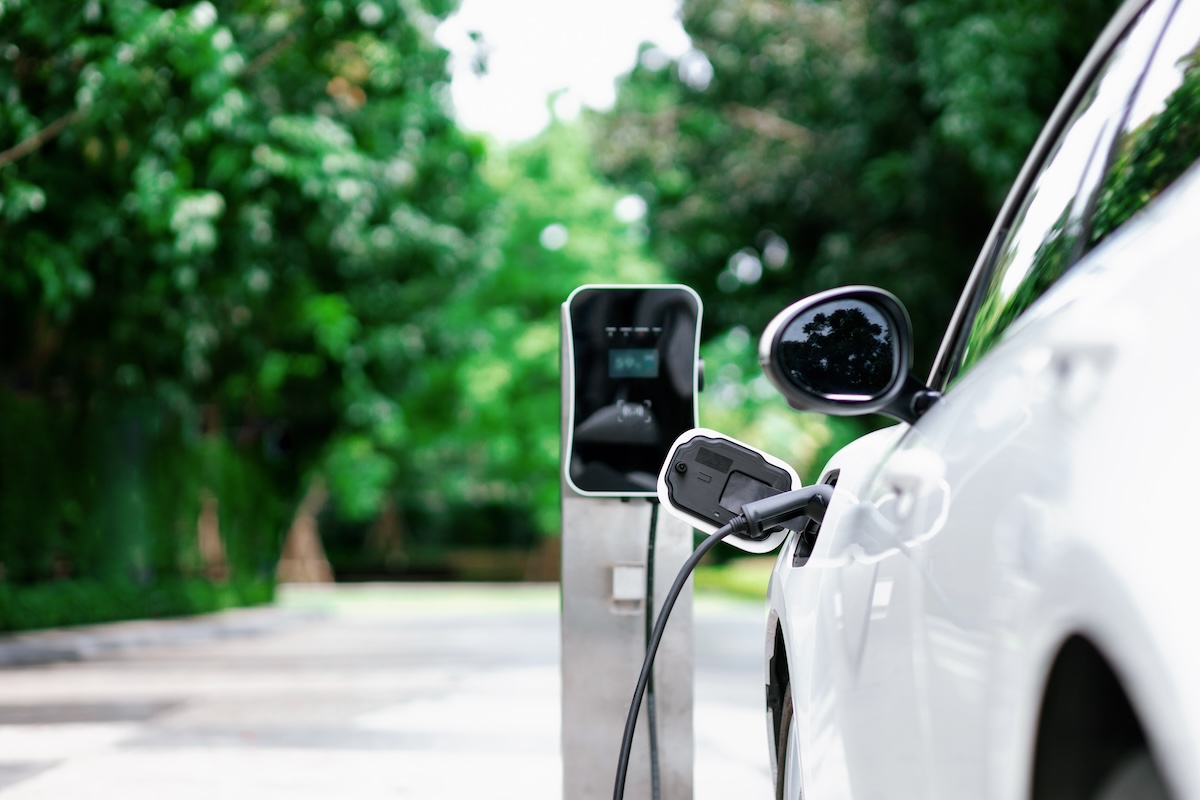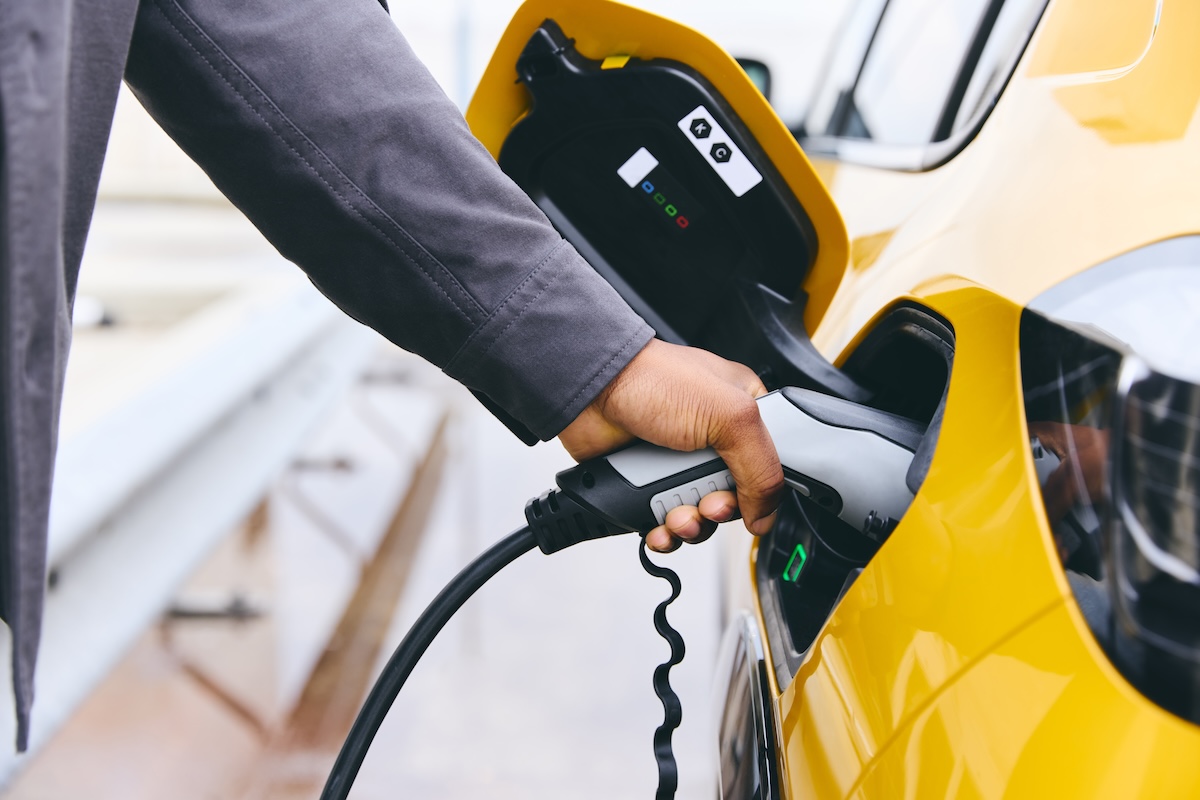Electric cars are rapidly increasing in popularity, so how does an electric vehicle (EV) work? There’s now a wide variety of electric vehicles to choose from, so it’s important to know the differences between a hybrid, plug-in electric hybrid (PHEV) and an EV with only a battery pack, so you can choose the right one for your driving.
One of the big advantages of an EV is they produce zero emissions from the tailpipe compared to petrol or diesel cars. It’s also vital to know how quickly an EV can be recharged at home or using public charging points, and how much this will cost. For company car drivers and private owners alike, this is a key consideration.
Here, we explain how an electric car works to help you make the best buying decision.
How Do Electric Cars Work?

What is an Electric Car?
An electric car is one that uses an electric motor to make it move. The motor replaces the internal combustion engine used in petrol- and diesel-powered cars. Instead of pouring in fossil fuel to power the car, an electric vehicle has a battery to store electricity to use when it’s needed.
Electric cars are often referred to as an ‘EV’, which means Electric Vehicle. This term is sometimes used more widely to talk about cars that have an electric motor but also use a petrol or diesel engine. These cars are hybrid cars, not EVs. A hybrid combines two types of power to drive the car and a hybrid cannot travel as far as an EV on pure electric power alone.
There are also PHEVs (plug-in hybrid electric vehicles), like the Ford Kuga PHEV, BMW 330e or Skoda Superb iV, and REX (range-extender) cars such as the BMW i3. Both have batteries and a petrol or diesel engine, so they are hybrids. A PHEV can usually cover more miles on battery power than a standard hybrid because its batteries can store much more electricity and you charge it up be plugging into a charging station like you do with an EV. However, a PHEV still cannot drive as far on battery power as an EV, hence why it has a fossil fuel engine to fall back on.
A REX range-extender uses a petrol or diesel engine as a generator to charge the battery rather than directly turning the car’s wheels. This provides added driving range when the battery runs low on charge.
Another type of battery electric vehicle is the fuel cell car that uses hydrogen, like the Toyota Mirai. Rather than charging the battery with electricity from a charging point, you fill a tank with hydrogen in the same way you would put petrol in. The fuel cell then mixes the hydrogen with oxygen from the atmosphere and this process generates electricity, with clean water as the only thing to come out of the tailpipe. So, an electric car is one that only uses electricity, whether that comes from a battery or hydrogen.

The Battery
The battery pack is one of the key components in an electric car. Its size will decide how far the car can travel and how long it takes to recharge.
Electric cars use lithium-ion batteries, like the one in your mobile phone but much bigger. They are arranged in packs, usually under the car’s floor to keep their considerable weight low down to help with handling and stability. Due to the weight of the batteries, most EVs are heavier than their equivalent petrol or diesel rivals. A Volkswagen ID3 tips the scales at 1625kg, whereas a Golf 1.0 TSI weighs in at 1264kg, which is 356kg less.
The maximum battery range is the figure usually quoted by EV car makers. It gives an indication of how far you can travel on a full charge, though this is affected by traffic conditions, the driver, and the weather. In cold weather, batteries do not perform quite as well, so range will be reduced. Also, if it’s cold, wet and dark, you’ll use the heater, windscreen wipers and lights, which further drain battery range, though EVs come with a standard auxiliary battery to make sure these safety features work even when the main battery if drained. Motorway driving also drains the battery more quickly.

The Motor
An electric motor has only one moving part, which is why it’s so quiet compared to petrol or diesel engines that have hundreds of components whirring away. The simplicity of the electric motor also makes it very reliable.
For more power, car makers use motors of different sizes, just as they do with fossil fuel engines. So city cars, such as a Renault Zoe or Honda-e will be fitted with a small electric motor. However, to gain more performance, cars like the Jaguar I-Pace or Porsche Taycan use two motors to get more power and, by placing one at each axle, offer four-wheel drive.
The way an EV drives can seem very different to a petrol or diesel car. Unlike fossil fuel engines, an EV’s motor delivers its full power almost instantly, so EVs can feel very quick off the mark. Electric cars don’t have a gearbox, so the power keeps coming in a seamless fashion, which makes an EV very smooth to drive when you get used to the idea of no gearchanges, like in conventional cars with an automatic transmission.

Charging
The rechargeable batteries in an EV can be topped up whenever you like. You can use a domestic socket, a wallbox at home or public charging points. A home socket will take a long time to charge an EV, so most EV drivers have a wallbox at home that recharge their car in around four to six hours, which is ideal for overnight charging.
If you don’t have a driveway or need to charge up while out, public charge points are becoming more and more common. You will need to check the type of charging port on your car matches the one on the charger. Then, you simply plug in and top up the battery. How long this takes depends on the size of your car’s battery and the rating of the charger. Most public charge points work at between 7- and 22kW, so they take up to four hours to recharge a battery from empty. Rapid chargers, like the ones Tesla provides, are rated at up to 150kW to give 80 per cent of full charge in less than 30 minutes.
Unique Features of an Electric Car
As well as running only on electricity, there are other unique traits of an electric car. They produce no harmful tailpipe emissions, with hydrogen fuel cell cars only emitting clean water. However, you do have to consider where the electricity comes from when recharging an EV as not all energy supplies are from clean, green renewables.
One of the things most drivers notice when they first try an EV is how quiet they are. The electric motor is near silent compared to a petrol or diesel engine, which makes an EV very hushed around town and at lower speeds. Since July 2019, all new EVs must be fitted with an AVAS (acoustic vehicle alert system) to let pedestrians and other road users know the car is approaching. The AVAS is usually inaudible inside the car, so it won’t disturb the peace.
Driving an EV can take a little getting used to as they use regenerative braking to top up the battery. This works by recycling energy as the car slows or brakes, turning the motor into a generator and storing the power back in the battery. Some cars, like the Nissan Leaf, let the driver choose how strong the regenerative braking is to recapture more energy. This also means you use the brakes far less, which reduces brake wear and servicing costs.
